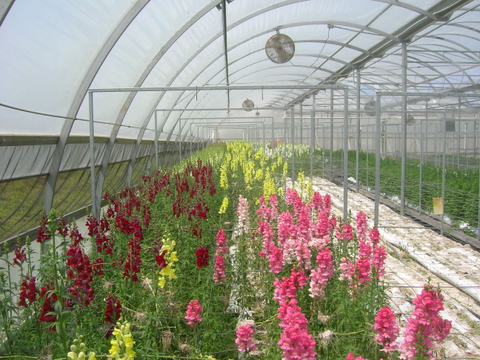You are here
Nutrient Management
 Nutrient management in the nursery and greenhouse industries is intimately linked with irrigation and water management since soilless substrates are very porous, leach easily and do not have a large nutrient holding (cation exchange) capacity.
Nutrient management in the nursery and greenhouse industries is intimately linked with irrigation and water management since soilless substrates are very porous, leach easily and do not have a large nutrient holding (cation exchange) capacity.
Consequently, nutrient management is intimately linked with good water management. If we can minimize the amount of water leaching from the soil in container production or the root zone in field production, we will maximize the amount of time in which plants can take up available nutrients. Soluble fertilizers are used in irrigation water in the greenhouse industry, and for this reason, we pay very close attention to the "leaching fraction" when we fertigate with nutrient solutions.
Soluble fertilization applications are also routinely used in field situations where drip irrigation is used. This practice is very cost-effective, and given that precise applications of nutrients are applied at low concentrations, this practice typically has an extremely low potential for nutrient runoff.
Most large-scale container-nurseries now use slow-release forms (SRF) of fertilizers. These SRF's are incorporated in the substrate prior to planting, or top-dressed on the surface of the substrate. These precise fertilizer applications, plus the slow-release technology in the casing around the fertilizer prill has been shown to greatly reduce the nutrient runoff potential from these operations.
Poor irrigation management can negate the good effects of all these practices, as over-irrigation is the primary factor in nutrient leaching and runoff. Until now, we have not had the tools to precisely estimate the real-time water content or nutrient availability in soils and substrates. This knowledge will allow us to further reduce nutrient losses from these production systems.
